What Do Remote Sensing Scientist or Technologist Do?
Remote Sensing Scientist or Technologist Definition Apply remote sensing principles and methods to analyze data and solve problems in areas such as natural resource management, urban planning, or homeland security. May develop new sensor systems, analytical techniques, or new applications for existing systems.
A Day in the Life of a Remote Sensing Scientist or Technologist
- Design or implement strategies for collection, analysis, or display of geographic data.
- Collect supporting data, such as climatic or field survey data, to corroborate remote sensing data analyses.
- Integrate other geospatial data sources into projects.
- Direct installation or testing of new remote sensing hardware or software.
- Set up or maintain remote sensing data collection systems.
- Compile and format image data to increase its usefulness.
Featured schools near , edit
Things a Remote Sensing Scientist or Technologist Should Know How to Do
When polled, Remote Sensing Scientists and Technologists say the following skills are most frequently used in their jobs:
Reading Comprehension: Understanding written sentences and paragraphs in work related documents.
Science: Using scientific rules and methods to solve problems.
Critical Thinking: Using logic and reasoning to identify the strengths and weaknesses of alternative solutions, conclusions or approaches to problems.
Complex Problem Solving: Identifying complex problems and reviewing related information to develop and evaluate options and implement solutions.
Writing: Communicating effectively in writing as appropriate for the needs of the audience.
Speaking: Talking to others to convey information effectively.
Types of Remote Sensing Scientist or Technologist Jobs
- Research Scientist
- Scientist
- Microwave Remote Sensing Scientist
- Remote Sensing Scientist
- Image Scientist
Job Opportunities for Remote Sensing Scientists and Technologists
In 2016, there was an estimated number of 23,500 jobs in the United States for Remote Sensing Scientist or Technologist. New jobs are being produced at a rate of 6.8% which is above the national average. The Bureau of Labor Statistics predicts 1,600 new jobs for Remote Sensing Scientist or Technologist by 2026. There will be an estimated 2,000 positions for Remote Sensing Scientist or Technologist per year.
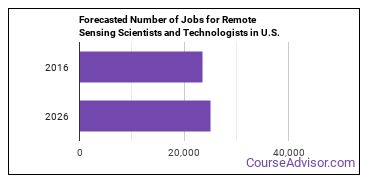
The states with the most job growth for Remote Sensing Scientist or Technologist are Nevada, Nebraska, and New Mexico. Watch out if you plan on working in Wyoming, West Virginia, or Tennessee. These states have the worst job growth for this type of profession.
Average Remote Sensing Scientists and Technologists Salary
The average yearly salary of a Remote Sensing Scientist or Technologist ranges between $51,730 and $164,210.
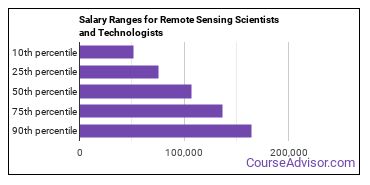
Remote Sensing Scientists and Technologists who work in District of Columbia, Maryland, or New Mexico, make the highest salaries.
How much do Remote Sensing Scientists and Technologists make in each U.S. state?
| State | Annual Mean Salary |
|---|---|
| Alabama | $122,420 |
| Alaska | $95,380 |
| Arizona | $87,870 |
| California | $117,830 |
| Colorado | $116,530 |
| Connecticut | $108,770 |
| District of Columbia | $134,100 |
| Florida | $88,270 |
| Georgia | $106,560 |
| Hawaii | $97,080 |
| Idaho | $64,900 |
| Illinois | $97,720 |
| Indiana | $81,740 |
| Kansas | $97,300 |
| Kentucky | $94,700 |
| Louisiana | $99,540 |
| Maryland | $130,450 |
| Massachusetts | $111,910 |
| Michigan | $94,810 |
| Mississippi | $87,010 |
| Missouri | $92,960 |
| Montana | $64,320 |
| New Hampshire | $89,600 |
| New Jersey | $96,850 |
| New Mexico | $127,210 |
| New York | $103,970 |
| North Carolina | $96,450 |
| North Dakota | $47,990 |
| Ohio | $102,370 |
| Oklahoma | $83,960 |
| Oregon | $82,560 |
| Pennsylvania | $115,050 |
| Rhode Island | $108,290 |
| South Carolina | $116,000 |
| Tennessee | $90,800 |
| Texas | $101,320 |
| Virginia | $121,850 |
| Washington | $108,430 |
| West Virginia | $103,810 |
| Wisconsin | $78,180 |
What Tools do Remote Sensing Scientists and Technologists Use?
Below is a list of the types of tools and technologies that Remote Sensing Scientists and Technologists may use on a daily basis:
- Microsoft Excel
- Microsoft Word
- Microsoft Office
- Microsoft PowerPoint
- Web browser software
- Structured query language SQL
- The MathWorks MATLAB
- Linux
- UNIX
- C
- Practical extraction and reporting language Perl
- Leica Geosystems ERDAS IMAGINE
- ESRI ArcGIS software
- Interface definition language IDL
- Image processing software
- C++
- RSI ENVI
Becoming a Remote Sensing Scientist or Technologist
What kind of Remote Sensing Scientist or Technologist requirements are there?
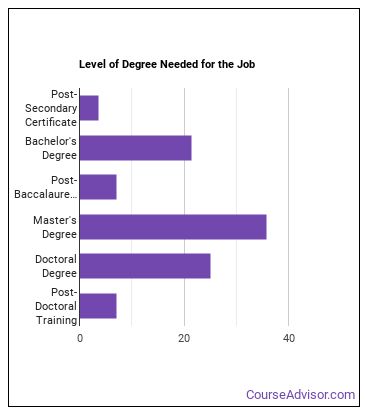
What work experience do I need to become a Remote Sensing Scientist or Technologist?
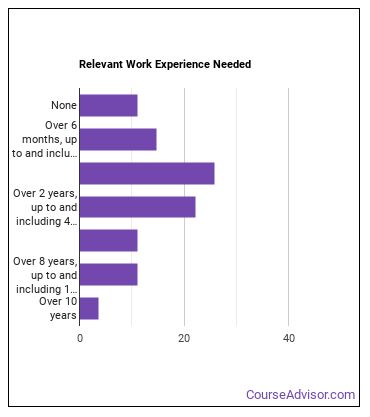
Where Remote Sensing Scientists and Technologists Are Employed
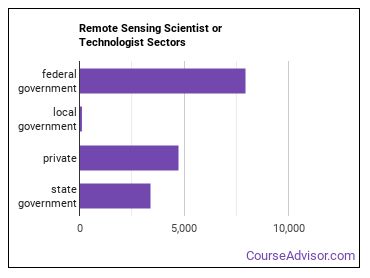
The table below shows the approximate number of Remote Sensing Scientists and Technologists employed by various industries.

You May Also Be Interested In…
Those interested in being a Remote Sensing Scientist or Technologist may also be interested in:
References:
Image Credit: Agsftw via Creative Commons Attribution-Share Alike 3.0 Unported
More about our data sources and methodologies.
Featured Schools
 Request Info
Request Info
|
Southern New Hampshire University You have goals. Southern New Hampshire University can help you get there. Whether you need a bachelor's degree to get into a career or want a master's degree to move up in your current career, SNHU has an online program for you. Find your degree from over 200 online programs. Learn More > |
